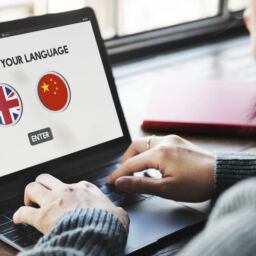

Script translation is a complicated and difficult task that requires professional native language experts. They have years of expertise in this field and a strong knowledge of the target language.
In addition to that, they can also adapt the script to the target audience and localize it properly. That way, your content will reach more people and make it more accessible to them.
Contents
Screenplays
A screenplay, sometimes also called a script, is a written work that may or may not be turned into a film or TV program. It is a complex beast that requires experts with deep knowledge of both the original language and the target language to produce a translation that accurately relays the text’s linguistic, cultural and narrative content.
Scripts are often written in different languages to make them accessible to a global audience, and they can be difficult for translators to understand because of the lingual and cultural differences between the source and the target language.
The translation of a script is a complex process that takes into account not only the dialogue but also the plot and the characters of the film. In the case of a script for a German TV show, for example, the translation is not only made in the target language but also adjusted to reflect the German culture, traditions and mentality.
In order to translate a screenplay, the script translator must not only be an expert in the language but must also have experience with the production company, including its rules and regulations. In this way, he or she can create a film script that is both authentic and adapted to fit the local market.
For instance, a German film script that is translated into English can be adjusted to include more dialogue to make the film more appealing to a wider audience. This type of editing is called a transcreation and is a vital part of the script-writing process.
Moreover, a script translation is a process that requires the translator to maintain correct formatting, for instance by including a parenthetical in the text. These parentheticals help the reader understand a character’s transition into another language.
Despite the aforementioned working definitions of translation and adaptation, some scholars argue that they are not acceptable and that the concept of craft should be reinstated. This argument is based on the pre-Romantic view on art and culture, which included craft as a valid art utility (e.g., Cattrysse 1990; Ksenofontova 2020). However, a Romantic value system has transformed this wide view into a narrow one that expeled craft from its territory (Cattrysse 1990; Ksenofontova2020).
Subtitles
Subtitles are often included in movies to help those who are deaf or hard of hearing read the dialogue. They also help people who are visually impaired to understand what is being said.
They can be very effective when used correctly and are a good way to communicate your message. But, they must be carefully chosen to match the storyline and the tone of the film.
It is also important to use the subtitle as a signposting tool for your audience. A subtitle that is too long could cause viewers to miss essential information. In addition, it can be distracting. In addition, subtitles should be short enough to fit on the screen without blocking other visual elements.
A great subtitle will tell readers what they can expect from your book and who it is for. It should also include a powerful call to action.
You should try to come up with subtitles that are unique and stand out from the rest. This is the best way to attract attention and increase sales.
The first step is to brainstorm a list of at least 20 subtitle ideas. Allow yourself to think about the words that you want in your subtitle without filters, so you can be sure to choose the most relevant terms possible.
After you’ve created your rough sketch, cut it down to the three best options for your subtitle. Then, get real feedback on them from readers who aren’t friends or family.
Another thing to consider is the number of characters per second. Generally, you should stick to a maximum of four characters per second. This will ensure that the subtitle will appear quickly and effectively when you read it.
Finally, you should be aware of the time that the subtitle needs to be displayed so it will be in the correct place and on the screen when it is needed. This will keep your translation from going waste, and will make it easier for your audiences to understand your content.
Whether you’re translating a book, movie, or anything else, subtitles are a vital part of any project. They’re a vital marketing tool that will make your work accessible to anyone who wants to read it, no matter what language they speak or how well they understand the original.



Audio-Visuals
Audio-Visuals refers to the audio and visual communication systems used in a variety of media, including films, television shows, radio programs, video games, music and comics. Script translation for audio-visuals requires a specific set of skills, as it involves the transfer of messages from one language to another, while preserving the tone, pacing and register of the original content.
For this reason, translators often transcribe the original narration before beginning the translation process. This way, they can compare the English source text with the target-language material and ensure a high level of accuracy.
In addition, linguists are always recommended to reference the source video while working on the translation, as it can help them grasp the details of the content that aren’t evident from reading it alone. This also allows them to check if the translated text is correct in terms of grammar and spelling, as well as the overall style and tone that needs to be replicated in the final product.
Once the translation has been approved by the client, the linguist can work with voice talents to record the translated script. This process can be time consuming, so it’s important to plan ahead and schedule the recording session as early as possible, to ensure a high quality result that meets your expectations.
After the recording, the translator will go through the translated text with a linguistic editor. This helps to identify any spots that may be difficult for the narrator to understand, so they can be changed accordingly to improve the effectiveness of the audio.
Finally, translators must be very careful to synchronize the timing of the translated text with any on-screen visuals or the overall length of the video. This is a highly complex and time-consuming task, which involves a lot of practice and a good knowledge of spotting and cueing.
There are many different types of audio-visuals, each with its own specific set of rules and challenges. For this reason, it’s important to work with a provider that understands the specific aspects of your project and can deliver high-quality results on time and within budget.
Marketing Materials
Marketing materials are a key part of any marketing strategy and are crucial to expanding your brand’s reach. Research suggests that 75% of consumers will purchase a product after hearing it advertised in their native language, so it is essential to ensure your marketing material translates properly.
As with any other translation service project, effective script translation takes time and careful consideration of all the nuances. This is why it’s best to get your marketing materials translated as early as possible, as there may be multiple revisions required before the final result is perfect.
There are many different types of marketing materials that need translation, ranging from digital content (like website copy) to more traditional hard copy marketing, such as brochures and direct mail campaigns. All of these will require an experienced translator to produce an effective script.
Idiomatic expressions, for example, are a great way to add color to your text and can make your message more interesting and appealing. However, they can also be confusing for your audience if they are not correctly translated.
You should also take the time to consider your target audiences and ensure that your messaging will resonate with them. This is why it’s important to have your marketing materials translated by professionals who understand the local market and are aware of how it differs from Western culture.
Your copy will need to be localized and tailored for each language, so it’s important that your marketing translator knows the ins and outs of your brand and its values. This includes anything from the tone of voice, to the words, and to any cultural references that may need to be altered or adapted.
It’s also important to choose a translator who has experience with your industry and business, as well as a creative edge. This is important, as you’ll be relying on them to produce effective copy that will help your brand to reach new audiences.














